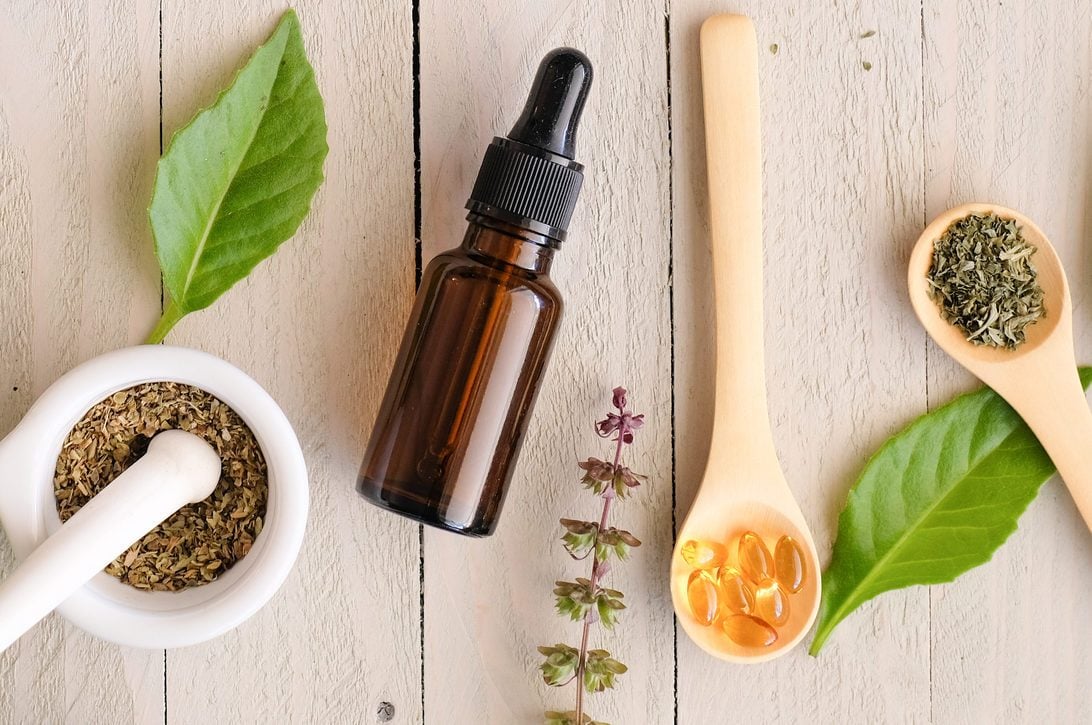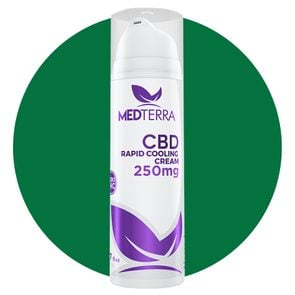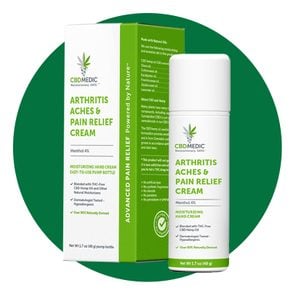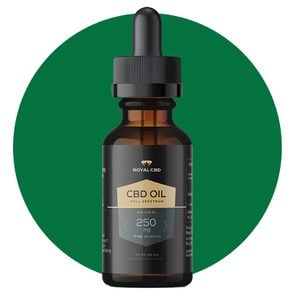What You Need to Know About CBD and Inflammation
Updated: Mar. 02, 2021
CBD may have pain-relieving and anti-inflammatory effects in the body. Here's what to know about CBD and inflammation.
Our editors and experts handpick every product we feature. We may earn a commission from your purchases.
CBD and inflammation
Many people use cannabidiol (CBD) to treat arthritis, pain, and other health issues, and CBD may also have the potential to quell inflammation.
The research is still evolving but “there’s a strong possibility that CBD has anti-inflammatory effects based on studies being done in mice and rats,” says says Kevin Boehnke, PhD, research investigator at the University of Michigan Medical School’s Chronic Pain and Fatigue Research Center. (Here’s what to know about CBD and rheumatoid arthritis.)
While research conducted in animals doesn’t always translate to humans, read on to learn more about CBD and inflammation.
Understanding inflammation
Inflammation is not inherently good or bad, notes Martin A. Lee, co-founder and director of Project CBD, a California nonprofit that promotes CBD research, and author of Smoke Signals: A Social History of Marijuana–Medical, Recreational, and Scientific.
“You need inflammation to fight an infection or deal with a mosquito bite, whatever it might be,” he explains.
Inflammation is part of the body’s natural immune response, but it’s intended for the short term. A cut is infected, the area becomes inflamed while your body is healing itself, and then the inflammation goes away once you’re healed up.
Long-term inflammation, on the other hand, is associated with health problems. Chronic inflammation plays a role in autoimmune conditions like rheumatoid arthritis, multiple sclerosis, and lupus.
What’s CBD?
The cannabis plant has more than 500 compounds, says Bonni Goldstein, MD, medical director and owner of Cannacenters and author of Cannabis is Medicine: How Medical Cannabis and CBD Are Healing Everything from Anxiety to Chronic Pain.
CBD is just one of cannabis’ compounds, but it’s an important one. Contrary to what you may have heard, CBD does not get you high. That comes from a sister compound called delta-9-tetrahydrocannabinol, or THC. (Learn more about the differences between CBD and THC.)
Though CBD is present in cannabis, it’s also found in the hemp plant. That’s the source of most CBD in the United States. Farmers can grow hemp legally under the 2018 Farm Bill as long as it contains no more than 0.3 percent THC.
The science behind CBD and inflammation
As Boehnke points out, most of the CBD studies out there are pre-clinical, meaning they haven’t been conducted in humans. This type of research always requires additional studies—those done in humans, and a good number of them.
With that caveat, it’s worth pointing out that lab and animal studies have yielded intriguing information about CBD’s potential for treating inflammation. In addition to studies showing a benefit for treating arthritis, other recent mice and rat studies suggest the anti-inflammatory effects of CBD may be much broader, including lowering cancer-related inflammation, inflammation related to prediabetes, and corneal inflammation after an eye injury.
Two studies in dogs with arthritis echoed these findings. A 2020 paper in the journal Pain reported that CBD given over four weeks reduced pain and increased function in dogs with osteoarthritis. The other, published in 2018 in Frontiers in Veterinary Science, concluded that 2 mg per kilogram of CBD oil twice a day yielded a similar effect. (These are the best CBD creams for arthritis.)
“Those studies show us that you can give CBD and you see these strong anti-inflammatory effects [but] it hasn’t translated to humans yet,” says Boehnke. Clinical trials are underway but, he cautions, “those results won’t be out for some time.”
CBD dosage for inflammation
The right dose of CBD for a particular condition is highly individual, and finding it often takes a lot of trial and error. CBD has been studied to treat sleep problems, anxiety, and pain in a wide range of doses, from less than 1 mg per day to 1,000 mg per day or more.
Experts generally recommend using CBD at the lowest effective amount, with many studies looking at doses of 25 to 50 mg per day. According to Dr. Goldstein, you may need to go higher than that to get an anti-inflammatory effect.
When buying your CBD product, do a little math to find out how many doses are in one container and how much CBD is in one dose. Starting low has the advantage of costing less. If you find relief at 20 mg, great. It’ll end up costing a lot less.

Is CBD safe?
Experts consider CBD to be pretty safe, but not without potential side effects. At higher doses, some people have gastrointestinal symptoms like diarrhea as well as sedation, says Dr. Goldstein. You can mitigate some of this by splitting the dose between morning and evening, she adds.
CBD can also interact with different medications, including some that are commonly used to treat autoimmune and inflammatory conditions, such as corticosteroids, Xeljanz (tofacitinib), and Aleve (naproxen).
The National Library of Medicine has a full list of potential interactions, but be sure to check with your healthcare provider before trying CBD.
Is it legal to buy CBD?
The legality of CBD (and THC, for that matter), remains a complicated issue in the United States. According to the National Conference of State Legislatures, 36 states, plus Washington, D.C., Puerto Rico, Guam, and the U.S. Virgin Island, have legalized medical marijuana (and therefore CBD). That’s as of now.
“There are more every election cycle,” says Boehnke.
The federal government thinks and acts differently. The U.S. Drug Enforcement Administration considers marijuana and all of its derivatives Schedule I controlled substances. Like weed, any CBD product that comes from marijuana is illegal.
The Schedule I status of these compounds is one of the main things standing in the way of human research. However, there is one CBD-containing drug, Epidiolex, that has been approved by the Food and Drug Administration. It is used to treat rare forms of epilepsy in children.
CBD products that come from hemp are regulated differently under federal law. Under the 2018 Farm Bill, hemp products (including CBD) that contain no more than 0.3 percent THC are not controlled substances. (Some states restrict the ability to buy hemp-derived CBD products, however.)
(Learn more about CBD oil for seizures.)
Types of CBD products
It would be impossible to name all of the products that contain CBD these days. To simplify, the products are often classified by how they’re delivered: those you inhale, those you can ingest (CBD capsules and CBD edibles), those you put on your skin (CBD creams), and those you put under your tongue (sublingual CBD tinctures), says Lee. CBD oils may be added to drinks, like smoothies, or taken sublingually.
Formats differ in how quickly they act (vaping is the fastest, but it also comes with risks, like potential lung damage), how long they last (those that you ingest can last for up to 12 hours), and which part of the body they affect.
Across all formats, products differ depending on how their ingredients. Here there are three basic types:
- Full-spectrum CBD: Contains all of the components of the hemp plant (Cannabis sativa), including CBD and small traces of THC and terpenes, which are plant compounds.
- Broad-spectrum CBD: Contains all of the ingredients found in full-spectrum CBD excapt for THC.
- CBD isolates: The purest form of CBD, containing only CBD.
Many people choose full- or broad-spectrum CBD products because the interaction of ingredients may promote a broader effect, says Lee. This is often called the “entourage effect.”
What to look for when buying CBD
There’s no question that finding the best CBD product for you can be a confusing and frustrating process. “Consumers are left to try to figure out how to use these products effectively in a quite unregulated market space,” says Boehnke. The lack of regulation means you won’t have confirmation a product contains what it says. Still, there are steps you can take to get the best-quality product for your needs.
Look for both quality and safety when buying CBD. “It’s just like when you’re in the supermarket. You read the label,” says Lee. “You bring the same intelligence to bear.”
If you live in a state with legal cannabis, look up a dispensary. “Typically there are standards enforced by the state for safety, potency, etcetera,” says Boehnke. “If you don’t live in a state where it’s legal, it becomes a lot more legwork.”
That legwork involves looking for U.S.-grown products, which are less likely to contain heavy metals and other contaminants, says the Arthritis Foundation.
Make sure any product you buy has a certificate of analysis, which provides the results of independent testing by a third-party lab. That will better guarantee that the ingredients are what they say they are. And don’t stop taking your existing medications.



